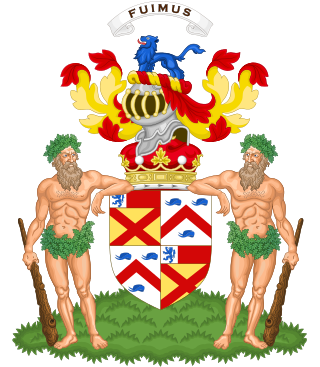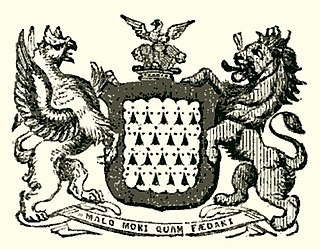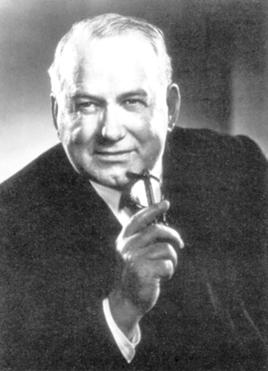Arms
  |
|
Baron Hives, of Duffield in the County of Derby, [1] is a title in the Peerage of the United Kingdom. It was created 7 July 1950 for the Ernest Hives, Chairman of Rolls-Royce Ltd. As of 2010 [update] the title is held by his grandson, the third Baron, who succeeded his uncle in 1997.
The heir apparent is the present holder's son, the Hon. Henry Peter David Hives (born 2024). [2]
| Title succession chart, Barons Hives | ||||||||||||||||||||||||||||||||||||||||||||||||||||||||||||||||||||||||||||||||||||||||||||||||||||||||||||||||||||||||||||||||||||||||||||||||||||||||||||||||||||||||||||||||||||||||||||||||||||||||||||||||||||||||
|---|---|---|---|---|---|---|---|---|---|---|---|---|---|---|---|---|---|---|---|---|---|---|---|---|---|---|---|---|---|---|---|---|---|---|---|---|---|---|---|---|---|---|---|---|---|---|---|---|---|---|---|---|---|---|---|---|---|---|---|---|---|---|---|---|---|---|---|---|---|---|---|---|---|---|---|---|---|---|---|---|---|---|---|---|---|---|---|---|---|---|---|---|---|---|---|---|---|---|---|---|---|---|---|---|---|---|---|---|---|---|---|---|---|---|---|---|---|---|---|---|---|---|---|---|---|---|---|---|---|---|---|---|---|---|---|---|---|---|---|---|---|---|---|---|---|---|---|---|---|---|---|---|---|---|---|---|---|---|---|---|---|---|---|---|---|---|---|---|---|---|---|---|---|---|---|---|---|---|---|---|---|---|---|---|---|---|---|---|---|---|---|---|---|---|---|---|---|---|---|---|---|---|---|---|---|---|---|---|---|---|---|---|---|---|---|---|
| ||||||||||||||||||||||||||||||||||||||||||||||||||||||||||||||||||||||||||||||||||||||||||||||||||||||||||||||||||||||||||||||||||||||||||||||||||||||||||||||||||||||||||||||||||||||||||||||||||||||||||||||||||||||||
  |
|

Marquess of Ailesbury, in the County of Buckingham, is a title in the Peerage of the United Kingdom. It was created on 17 July 1821 for Charles Brudenell-Bruce, 2nd Earl of Ailesbury.

Earl of Mount Edgcumbe is a title in the Peerage of Great Britain. It was created in 1789 for George Edgcumbe, 3rd Baron Edgcumbe. This branch of the Edgcumbe family descends from Sir Piers Edgcumbe of Cotehele in Cornwall, who acquired an estate near Plymouth through marriage in the early 16th century, which was later re-named "Mount Edgcumbe". His descendant Richard Edgcumbe was a prominent politician and served as Paymaster-General of Ireland and as Chancellor of the Duchy of Lancaster. In 1742, he was created Baron Edgcumbe, of Mount Edgcumbe in the County of Devon, in the Peerage of Great Britain. Richard Edgcumbe was succeeded by his eldest son, the second Baron. He represented Plympton Erle, Lostwithiel and Penrhyn in the House of Commons and served as Lord-Lieutenant of Cornwall. On his death, the title passed to his younger brother, the third Baron. He was an Admiral of the Blue and also held political office as Treasurer of the Household and as Captain of the Honourable Band of Gentlemen Pensioners. In 1781, he was created Viscount Mount Edgcumbe and Valletort and in 1789 he was further honoured when he was made Earl of Mount Edgcumbe. Both titles are in the Peerage of Great Britain.

Earl of Lisburne is a title in the Peerage of Ireland. It was created in 1776 for Wilmot Vaughan, 4th Viscount Lisburne. He represented Cardiganshire and Berwick-upon-Tweed in the House of Commons and held minor governmental office.

Earl of Iddesleigh, in the County of Devon, is a title in the Peerage of the United Kingdom. It was created in 1885 for the Conservative politician Sir Stafford Northcote, 8th Baronet, of Pynes in the parish of Upton Pyne near Exeter in Devon and lord of the manor of Iddesleigh, 28 miles north-west of Pynes. He served as President of the Board of Trade, Secretary of State for India, Chancellor of the Exchequer, First Lord of the Treasury and Foreign Secretary and was Joint Leader of the Conservative Party from 1881 to 1885. Northcote was made Viscount St Cyres, of Newton Saint Cyres in the County of Devon, at the same time he was given the earldom. This title is also in the Peerage of the United Kingdom.

Earl Howe is a title that has been created twice in British history, for members of the Howe and Curzon-Howe family respectively. The first creation, in the Peerage of Great Britain, was in 1788 for Richard Howe, 4th Viscount Howe, but it became extinct upon his death in 1799. The second creation, in the Peerage of the United Kingdom, was in 1821 for Richard Curzon-Howe, 2nd Viscount Curzon, and it remains extant.

Baron Manners, of Foston in the County of Lincoln, is a title in the Peerage of the United Kingdom. It was created in 1807 for the lawyer and politician Sir Thomas Manners-Sutton. He served as Solicitor-General from 1802 to 1805 and as Lord Chancellor of Ireland from 1807 to 1827. Manners-Sutton was the fifth son of Lord George Manners-Sutton, third son of John Manners, 3rd Duke of Rutland. His elder brother Charles Manners-Sutton was Archbishop of Canterbury from 1805 to 1828 and the father of Charles Manners-Sutton, 1st Viscount Canterbury, Speaker of the House of Commons from 1817 to 1834. The first Baron's great-grandson, the fourth Baron, assumed the surname of Manners only. As of 2010 the title is held by the latter's grandson, the sixth Baron, who succeeded his father in 2008.

Baron Trimlestown, of Trimlestown in County Meath, was a title in the Peerage of Ireland. Following the death of the 21st Baron in January 2024 with no known heir, the title is dormant, and may be extinct.

Baron Glentoran, of Ballyalloly in the County of Down, is a title in the Peerage of the United Kingdom. It was created on 8 July 1939 for the Unionist politician Herbert Dixon. In 1950 he also succeeded his elder brother as third Baronet, of Ballymenock. His son, the second Baron, was also a politician and served as the last Speaker of the Senate of Northern Ireland. As of 2017 the titles are held by the latter's son, the third Baron, who succeeded in 1995. He is a former Olympic bobsleigh gold medallist as well as a soldier, businessman and politician. Lord Glentoran was one of the ninety elected hereditary peers who remain in the House of Lords after the passing of the House of Lords Act 1999, and sat on the Conservative benches until his June 2018 retirement under the House of Lords Reform Act 2014.
Baron Greenhill, of Townhead in the City of Glasgow, was a title in the Peerage of the United Kingdom. It was created on 8 July 1950 for Ernest Greenhill, a former member of the Glasgow Corporation. His elder son, the second Baron, was Professor of Community Medicine at the University of Alberta in Canada. The third Baron, who succeeded in 1989, once worked for the UK Ministry of Defence as a patent attorney.
Baron Kenswood, of St Marylebone in the County of London, is a title in the Peerage of the United Kingdom. It was created in 1951 for the professional violinist and welfare worker for the blind, Ernest Whitfield. As of 2017 the title is held by his grandson, the third Baron, who succeeded in 2016.
Baron Swansea, of Singleton in the County of Glamorgan, is a title in the Peerage of the United Kingdom and held by a branch of the Vivian family. It was created on 9 June 1893 for the industrialist Sir Henry Vivian, 1st Baronet. He had already been created a Baronet, of Singleton in the County of Glamorgan, on 13 May 1882. He was succeeded by his eldest son, the second Baron. On his death the titles passed to his half-brother, the third Baron. As of 2014 the titles are held by the latter's grandson, the fifth Baron, who succeeded his father in 2005.

Baron Sherfield, of Sherfield-on-Loddon in the County of Southampton, Is a title in the Peerage of the United Kingdom. It was created in 1964 for the diplomat Sir Roger Makins. He had previously served as British Ambassador to the United States. His eldest son, the second Baron, was a leading expert on national security and defence issues. As of 2010 the title is held by the latter's younger brother, the third Baron, who succeeded in 2006.
Baron Palmer, of Reading in the County of Berkshire, is a title in the Peerage of the United Kingdom. It was created in 1933 for the businessman and patron of music, Sir Ernest Palmer, 1st Baronet. He had already been created a baronet, of Grosvenor Crescent in the City of Westminster, in the Baronetage of the United Kingdom on 26 January 1916. The Palmer family had made its fortune from their ownership of the firm of Huntley & Palmers, biscuit manufacturers, of Reading. As of 2023 the titles are held by the first Baron's great-great-grandson, the fifth Baron, who succeeded his father in 2023.
Baron Morris of Kenwood, of Kenwood in the City of Sheffield, is a title in the Peerage of the United Kingdom. It was created in 1950 for the Labour politician Harry Morris. He had previously represented Sheffield Central and Sheffield Neepsend in the House of Commons. As of 2017 the title is held by his grandson, the third Baron, who succeeded his father in 2004.
Baron Chorley, of Kendal in the County of Westmorland, is a title in the Peerage of the United Kingdom. It was created on 16 November 1945 for the barrister, academic and Labour politician, Robert Chorley. He was Sir Ernest Cassel Professor of Commercial and Industrial Law at the University of London from 1930 to 1946 and served as a Lord-in-waiting from 1946 to 1950 in the Labour administration of Clement Attlee. The second Baron, who succeeded his father in 1978, was one of the ninety elected hereditary peers elected remain in the House of Lords after the passing of the House of Lords Act of 1999, where he sat as a cross-bencher. As of 2016 the title is held by his son.
Baron Rochester, of Rochester in the County of Kent, is a title in the Peerage of the United Kingdom. It was created in 1931 for the Liberal and National Labour politician, Ernest Lamb. He served as Paymaster General from 1931 to 1935. As of 2017 the title is held by his grandson, the third Baron, who succeeded in 2017.

Baron Rankeillour, of Buxted in the County of Sussex, is a title in the Peerage of the United Kingdom. It was created in 1932 for the Conservative politician James Fitzalan Hope. He was the grandson of General Sir Alexander Hope, fourth son of John Hope, 2nd Earl of Hopetoun. His eldest son, Arthur Hope, was also a Conservative politician and held junior ministerial office. From 1940 to 1946 he served as Governor of Madras. He was succeeded by his younger brother, the third Baron, Henry John Hope. After the death of Henry John Hope's only son, Peter St Thomas More Hope in 2005,, who was unmarried, succession went to his first cousin, the fifth Baron, Michael Richard Hope, who is the present holder of the title, and is the eldest son of the Hon. Richard Frederick Hope, who was the youngest son of the first Baron.

Ernest Walter Hives, 1st Baron Hives, was the one-time head of the Rolls-Royce Aero Engine division and chairman of Rolls-Royce Ltd.

There have been four baronetcies created for members of the Wills family, owners of W. D. & H. O. Wills and major shareholders and directors of the Imperial Tobacco Company. All four creations were in the Baronetage of the United Kingdom.
Baron Dunleath, of Ballywalter in the County of Down, is a title in the Peerage of the United Kingdom. It was created on 29 August 1892 for the businessman and former Conservative Member of Parliament for Downpatrick, John Mulholland. The Mulholland family were involved in the cotton and linen industry in Ulster in the north of Ireland. The first Baron's son, the second Baron, represented Londonderry North in the House of Commons as a Conservative. His grandson, the fourth Baron, was a member of the Northern Ireland Assembly for the Alliance Party. He was succeeded by his first cousin, the fifth Baron, who had already succeeded his father as second Baronet of Ballyscullion. As of 2017 the titles are held by the fifth Baron's son, the sixth Baron, who succeeded in 1997.